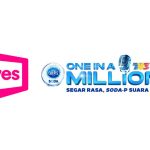The brand placement in the third season of Netflix’s “Stranger Things” is estimated to be valued at USD$15 million, according to a report from Concave Brand Tracking.
Researchers recorded more than 100 visible brands across the season’s eight episodes that came in the form of approximately 45 products, such as cars, drinks, shoes, stores and food. Fourteen brands were called out in the show’s dialogue, including Smirnoff which was mentioned four times.
The top 10 most visible brands were Coca-Cola, Cadillac, Chevrolet, Casio, 7-Eleven, Sharp, Adidas, Pentax, Reebok and Burger King, according to the report. Coca-Cola, was featured in every episode of the season, receiving exposure worth USD$1.5 million in the first three days of its release on Netflix.

But the third season of “Stranger Things” still contained one to three times less product visibility than other Netflix original series such as “The Defenders” and “Daredevil.”
But “Stranger Things” is set to generate much higher advertising revenue due to record-breaking viewership. On July 8, Netflix tweeted that 40.7 million household accounts had watched the series since its release on July 4.
Prior to the season’s release, many brands partnered with the show for promotional campaigns. Among them was Burger King’s “Upside Down” whopper, and Coca-Cola which brought back its failed “New Coke,”which is featured in the series.
Dominic Artzrouni, director of Concave Brand Tracking, believes that Netflix presents a significant opportunity for marketers. As a streaming service, it’s able to partner with brands free of the legal constraints of network channels, he says.
It also equips marketers to understand who is seeing their product and releases information on the size of a show’s viewership. Not having this knowledge, according to Artzrouni, has presented an issue for brands in the past.
“With Netflix now releasing figures, companies such as ours can now put a dollar value on these brand integrations.
“And with Netflix’s viewer base ever growing and the cost of product placement being fairly low compared to traditional advertising, the ROI numbers are making brands very happy,” he says.
“We find the same quality of product placement on Netflix shows as in HBO or Showtime but with far bigger audiences.”
A Netflix spokesperson clarifies that no official product placement was used in the show’s most recent season.
“None of the brands and products that appear in ‘Stranger Things 3’ were paid for or placed by third parties. They’re all part of the [show creator] Duffer Brothers’ storytelling, which references 1980s consumer and popular culture.”
A report from the Statistics Research Department projected that brands would spend $11.44 billion would spend on product placement in 2019, a testament to its viability as a marketing strategy.
Despite some backlash “Stranger Things” has received over the visibility of its partnerships, Artzrouni believes that product placement as a practice is “embedded in the industry.”
“We also see this in brands forming long-lasting partnerships with shows and even film franchises, ” he says, “whether it is Coca-Cola in ‘Stranger Things’ or Fiat Chrysler across the ‘Fast & Furious’ series.”
source: http://www.ama.org
MARKETING Magazine is not responsible for the content of external sites.











